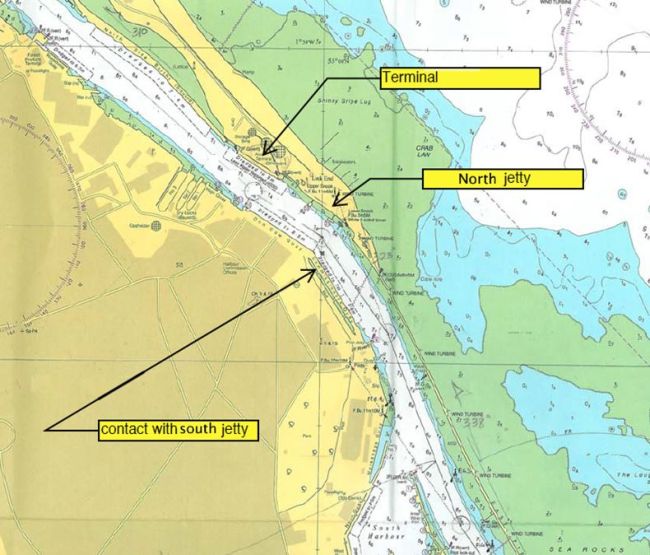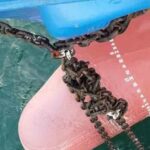Real Life Accident: Small And Manoeuvrable But Still Out Of Control
On a clear night, a small feeder ship with controllable pitch power (CP) was brought out of a restricted port in order to shift berth from port to starboard side. It was to be turned around and brought back in. A passage plan was presented and discussed during the Pilot/Master exchange prior to leaving the berth. The passage down river to the sea was uneventful. The vessel turned outside the port and began the approach to re-enter.
While passing the breakwaters the vessel’s speed was approximately 8.5 knots (40% pitch). As they progressed in the gyro was checked against leading lights and found to be out by up to 8°. The pilot suggested that another bearing be taken on the inner harbour leading line. During this phase of the transit, verifying the gyro occupied the bridge team to a great extent.

On approaching the jetty, the pilot ordered a reduction of speed to minimal ahead. The pitch was subsequently reduced from 40% to 10% but this sudden reduction caused a large swing to port. The pilot ordered starboard helm and more propeller pitch to aid steerage. Now at about 2-3 cables from the terminal berth, the pitch was put to 0% and then full astern which swung the bow to starboard. This resulted in the vessel grounding south of the terminal berth at about 3 knots.
Coming full astern brought the vessel off the ground very quickly, but caused the stern to swing rapidly to port. The vessel then made heavy contact with the south jetty on the opposite side of the river. At this point, control of the vessel was regained and the vessel completed berthing starboard side to at the terminal berth.
Lessons learned
- The gyro error distracted the bridge team during a critical period of the berth approach.
- Background lights and darkness made visual observation of the berth, and the closing distance, more difficult to judge.
- The Master was unaware of the pilot’s contingency plan, which was to overshoot the berth (go further up-river). This was not communicated during the Master/Pilot exchange.
- As is common with CP power vessels, the abrupt decrease of speed caused the vessel to lose steering and take a shear.
- The Master played a passive role during the manoeuvres and could have been more aware and involved in the handling of the ship and its movements.
Reference: nautinst.org
Do you have info to share with us ? Suggest a correction
- Real Life Incident: Vessel Collision in Good Visibility
- Real Life Incident: Severe Injury To Deck Crew While Leaving Berth
- Real Life Incident: Departure Damage in Very Restricted Waterway
- Real Life Incident: Low Situational Awareness Has High Impact Consequence
- Real Life Incident: Fouled Anchor in a Designated Anchorage
- Real Life Incident: Fire On Barge Carrying Scrap Metal Causes $7 Million Worth Of Damage
Latest Case studies Articles You Would Like:
Subscribe To Our Newsletters
By subscribing, you agree to our Privacy Policy and may receive occasional deal communications; you can unsubscribe anytime.















